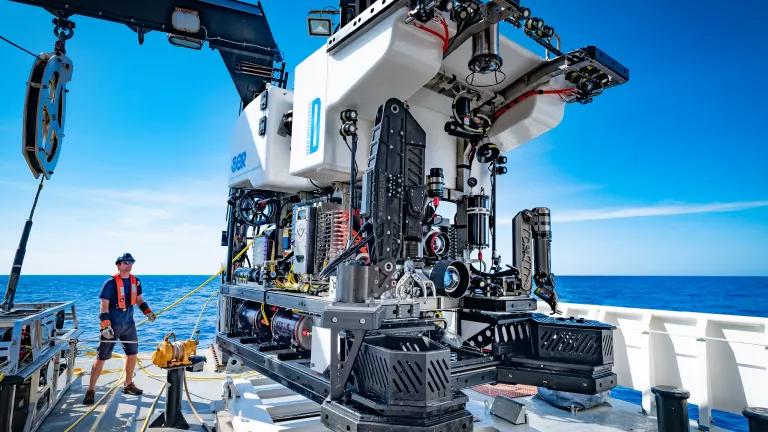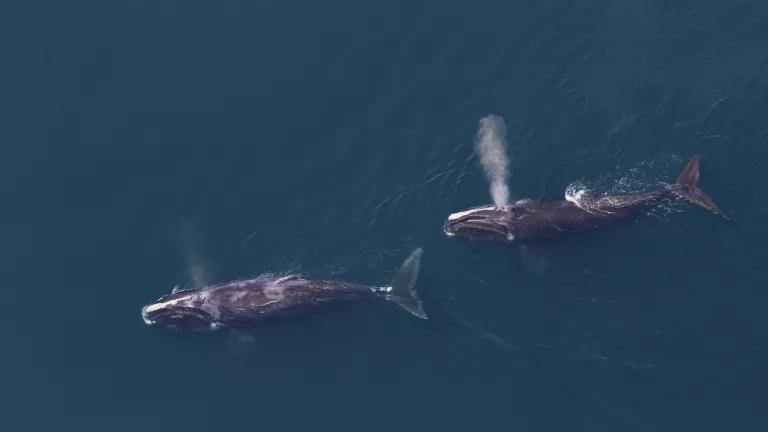As we celebrate our ocean this week, it is hard not to focus on the bad news. Spreading dead zones, tanking fish stocks, rising acidification, and surging tides of plastic waste, noise pollution, sewage, chemicals and oil spills.
There is a lot to worry about. But there's also a lot to be hopeful about as well.
Take the high seas, where a new international instrument to enable the establishment of fully protected marine parks will be negotiated beginning next year.
And the Arctic, where Secretary of State John Kerry has laid out a far-sighted agenda for the two year US Chairmanship of the premier international policy making body for the Arctic - the Arctic Council.
The Arctic is warming faster than anywhere else on the planet, and its ecosystems and people are increasingly at risk. Dramatic loss of sea ice, which underpins the ecology of the Arctic marine environment, is threatening the future of walrus, polar bears, narwhal, polar cod, ice seals, arctic birds and arctic fish, all of which have life cycles timed to the seasonal ebb and flow of sea ice in the region.
The Arctic is also highly vulnerable to ocean acidification, in part because CO2 dissolves more readily in cold water. Skeleton and shell-forming creatures, from deep sea corals and clams to the tiny shelled plankton at the base of the food chain here, are increasingly vulnerable to the corrosive effects of acid Arctic seawater.
On top of all of this, oil development, fishing, shipping, and other industrial activities are poised to fill the space left by the shrinking Arctic ice pack, adding to the extreme stress many Arctic ecosystems already face.
It is critically important that we get out in front of accelerating industrial development in the Arctic Ocean and plan for new industrial activity in a way that protects key habitats and the functioning of the Arctic marine environment as a whole.
That's why I'm encouraged by the forward-looking agenda the U.S. has set out for its 2-year Chairmanship of the Arctic Council that began last month.
They key now is making sure the vision set out by the US becomes reality. Top targets:
1.Arctic Marine Protected Areas ("MPAs"): Scientists tell us that fully protected MPAs are a key tool to protect biodiversity and maintain resilience in the face of rapid warming and loss of ice. Yet only a tiny fraction of the Arctic marine environment has been fully protected. Because many Arctic species are highly migratory, we need these protected areas to be connected ecologically and coordinated internationally. A well coordinated network of sanctuaries would greatly help maintain the biodiversity and resilience of Arctic marine ecosystems as they face profound changes.
2. A regional seas arrangement: because marine life does not respect political boundaries, international cooperation in the management of human activities is essential. Activities in one nation's waters can easily affect those of another nation, and efforts to protect and properly manage one EEZ could be undermined by less stringent approaches elsewhere.
3. Ocean acidification: We know the Arctic is highly vulnerable to ocean acidification, but it appears to be occurring unevenly, varying with oceanographic conditions. We need to get a better understanding of the species and places that are most vulnerable to acidification, in part by enhancing monitoring of ocean chemistry in the region. This kind of work can help us identify vulnerable Arctic communities and plan development in a way that reduces other stressors on the environments and communities at risk.
4. The high seas "donut hole": Under the leadership of the United States, the five nations bordering the Arctic Ocean recently agreed to prohibit their vessels from fishing in the Arctic Ocean beyond national jurisdiction (the high seas "donut hole") pending better scientific understanding of the region and development of a management scheme. This visionary step lays the groundwork for other joint initiatives to protect the high seas from potentially damaging human activities until we have a much better scientific understanding of the region and can develop appropriate science-based controls.
I'm looking forward to speaking on a panel on just these topics this afternoon, Tuesday June 9, at 3-4PM ET, during Capitol Hill Oceans Week. The panel will also include Alaska Senator Lisa Murkowski and U.S. Special Representative for the Arctic Admiral Robert Papp, Jr.
If you would like to follow along, free livestreaming of Capitol Hill Oceans Week sessions is available here: http://www.oceanslive.org/ Search for our panel: Taking the Helm: Chairing the Arctic Council.




